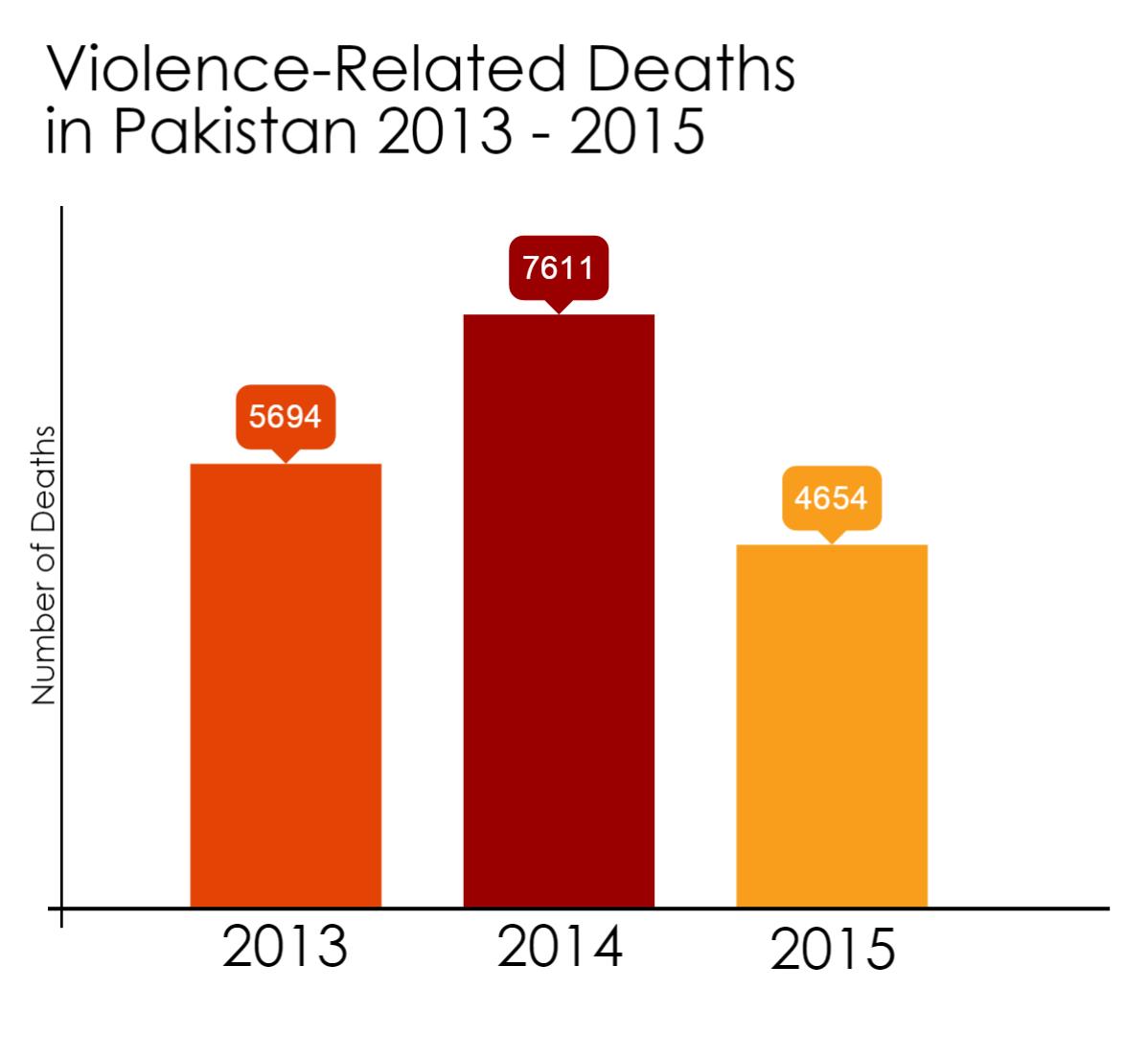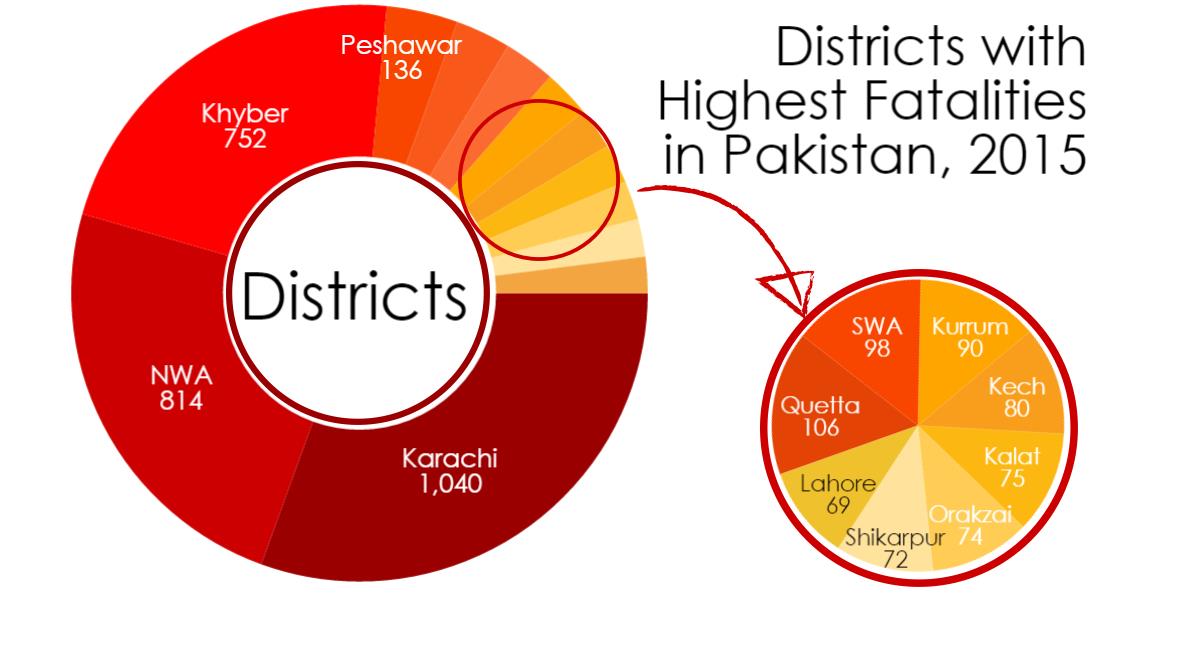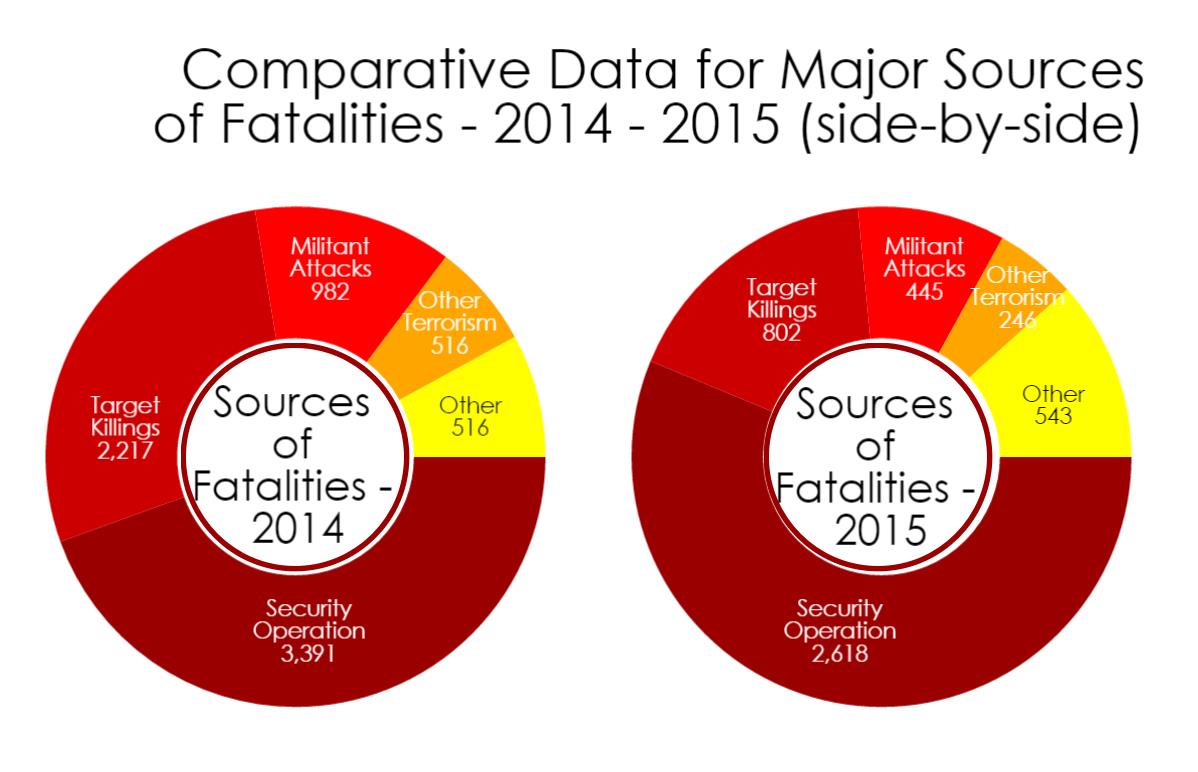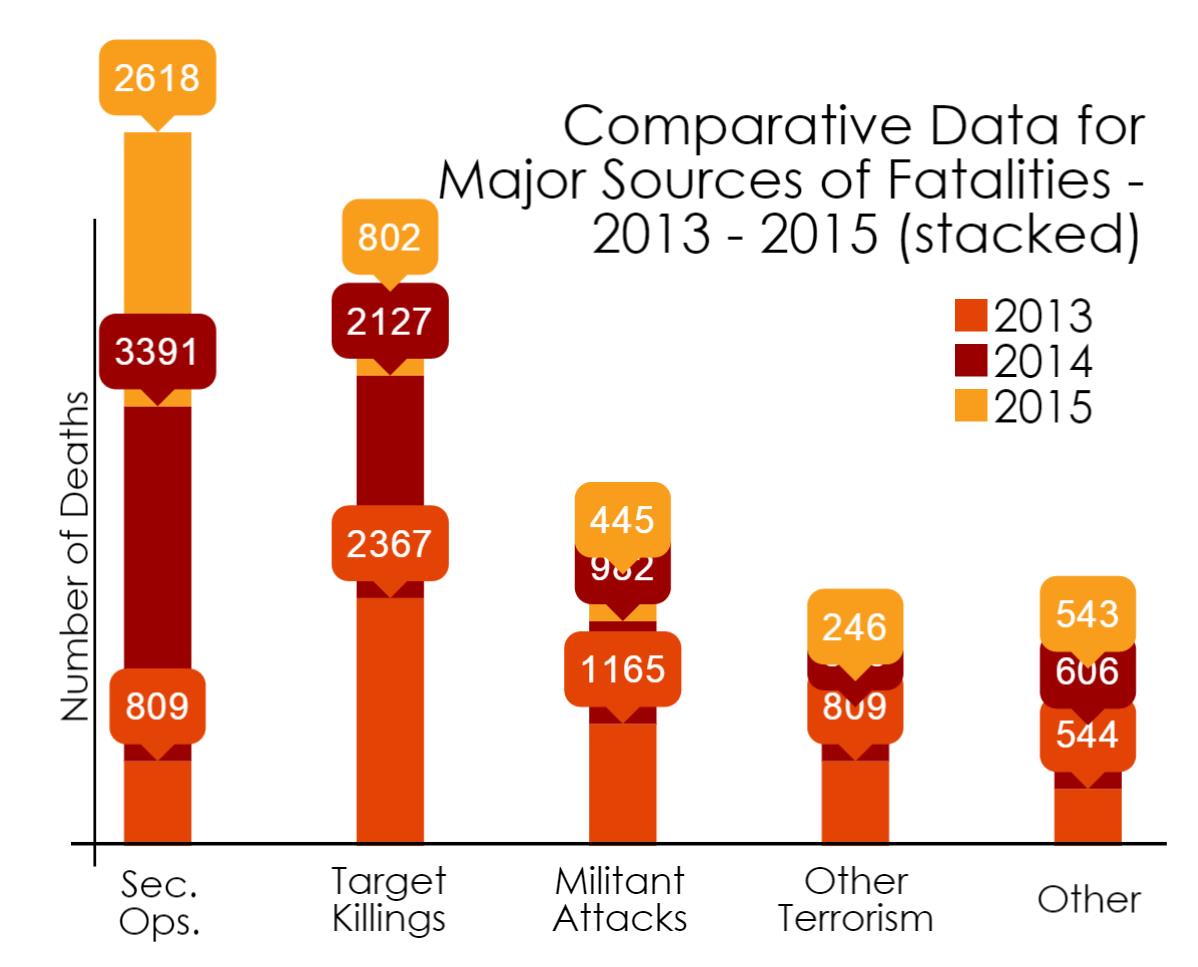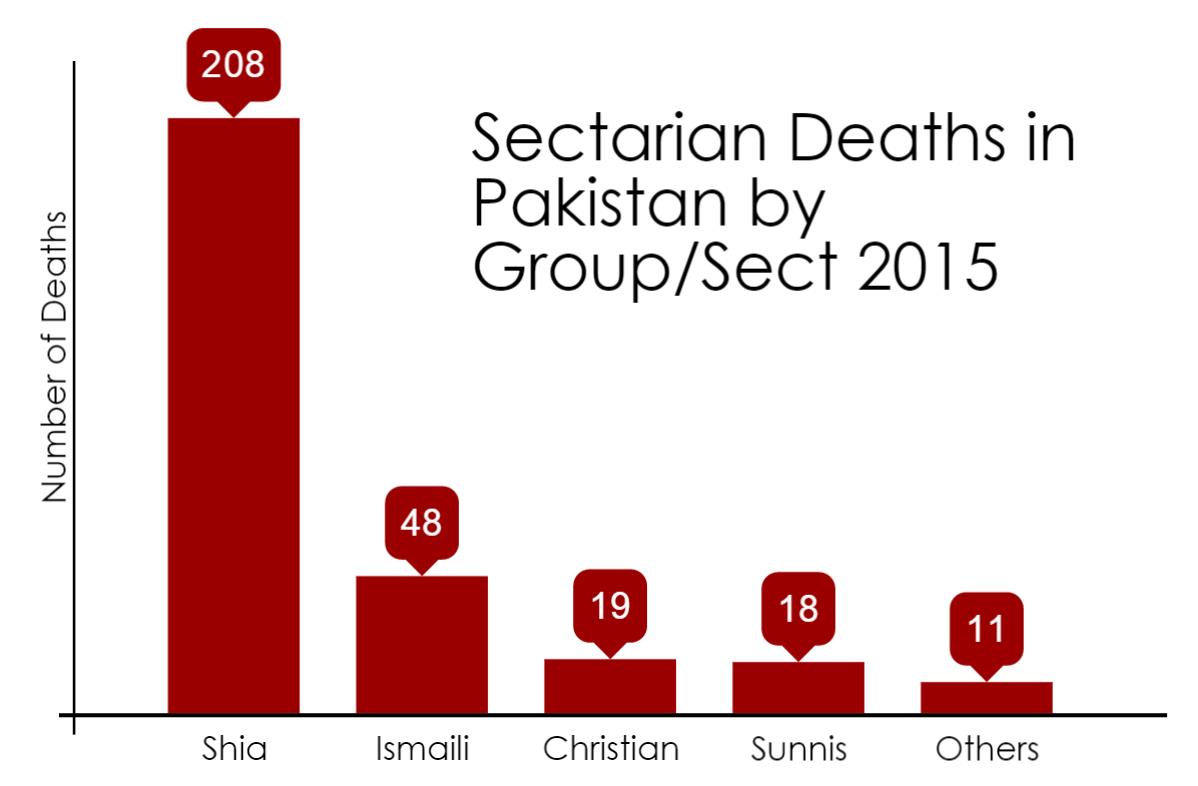Executive Summary
Pakistan continued to face a range of internal security issues in 2015, resulting in a wide variety of different forms of violence. However, with the enactment of the National Action Plan (NAP), there seemed to be some semblance of a coordinated state response to terrorism and crime. Direct correlation between the NAP and the apparent decrease in violence-related fatalities is difficult to establish, but the decline has been pronounced and significant.
The major sources of deaths in 2015 included terrorism, militant attacks, target killings, and security operations. Compared to 7,622 deaths in 2014, a total of 4,612 people died in 2015 as a direct result of violence, which is an average decrease of roughly 40%. This is a fairly major decline in violence-related fatalities in 2015, given that between 2013 and 2014, this number rose by about 35%.
Regionally, the decrease in overall fatalities can be largely attributed to a sharp decrease in violence-related fatalities in the Khyber Pukhtunkhwa, the Federally Administered Tribal Areas (FATA), and Sindh, the latter two of which exhibited a roughly 45% decrease in fatalities.
The rate of fatalities in FATA fell from 3,371 in 2014 to 1,917 in 2015. The same figures for Sindh declined from 2,186 in 2014 to 1,221 in 2015. The most remarkable percentage decrease was observed in Khyber Pukhtunkhwa, where violence-related fatalities fell from 952 in 2014 to 441 in 2015, (53% decline). Balochistan also observed a slight decrease, whereas Punjab saw a slight increase. Punjab police also engaged and killed Malik Ishaq, the Sunni supremacist militant leader of Lashkar-e-Jhangvi. In retaliation, Punjab’s own law minister, Col. (retd.) Shuja Khanzada was killed in August. These incidents point to a volatile security situation in Punjab, the only province where violence-related fatalities registered an increase.
District-wise, despite a major overall decrease, Karachi topped as the most violence-affected district, even above North Waziristan. However, it must be said that even in Karachi deaths off violence halved from 2014, falling from 2,023 to 1,040. Other highly affected districts were North Waziristan Agency (814), Khyber Agency (752), Peshawar District (136) and Quetta District (106), respectively. Every single one of these showed a significant decline from 2015.
When we look at the sources of fatalities, new, interesting patterns emerge. Much like in 2014, security operations accounted for the most number of fatalities in 2015 as security forces in Pakistan continued to engage militants, insurgents and criminals alike in border-region clean-up operations and urban pacification operations. Security operation related-fatalities dropped from 3,391 in 2014 to 2,618 in 2015. In addition, there was a sharp decline in terrorism and militancy related fatalities as well as target killings. Both terrorism and militancy related fatalities declined by half: fatalities from direct militant attack dropped from 982 in 2014 to 445 in 2015 (55%) and other terrorism fatalities dropped from 516 in 2014 to 246 in 2015 (52%). The most remarkable decline was observed in target killings, which dropped 65% from 2,217 in 2014 to 802 in 2015.
Another way to visualize this data is as follows:
Sectarian fatalities also saw a decline in 2015, with 272 fatalities, compared with 2014’s 420, which is a 35% decrease. However, the vast majority of these fatalities were Shia Pakistanis, who accounted for 208 of the 272 fatalities (76%).
This is especially alarming because despite a significant overall decrease in sectarian violence, Shias have seen a 10% increase in fatalities. Part of the reason for this is the historically weak state response to violence against minorities, and part of it is the impunity with which certain sectarian groups still operate within the country. Other targeted groups included Christians (19) and Ismailis (48).
All in all, Pakistan observed a remarkable decrease in violence-related fatalities from 2014, when certain factors had caused the number of fatalities to sharply increase over 2013. In fact the fatalities observed in 2015 are lower than those observed in 2013 as well. This may be contributed, in part, to the state response to extremism and terrorism in the form of NAP after the horrific attack on schoolchildren at the Army Public School in Peshawar Cantonment on December 16, 2014. However, while the data may paint a better picture, it must be said that this is a long, sustained fight that cannot lose momentum over a few local victories. Pakistan must continue to combat militancy, insurgency, extremism and crime, by not only physically destroying the enemy, but targeting the radical ideology that gives birth to such activities.
Note: you can see this data online: [https://magic.piktochart.com/output/4059931-crss-pct-executive-summary]. Please click the “Present” button in the top-right of this window. This data is preliminary and includes information until December 29, 2015. The final report’s figures may vary slightly.


